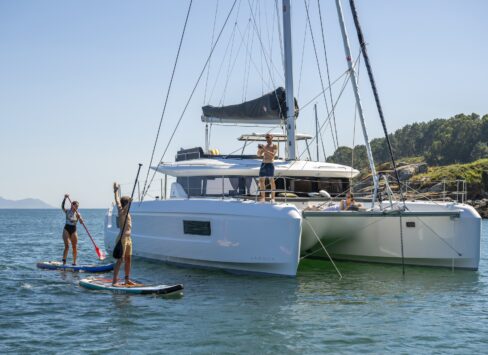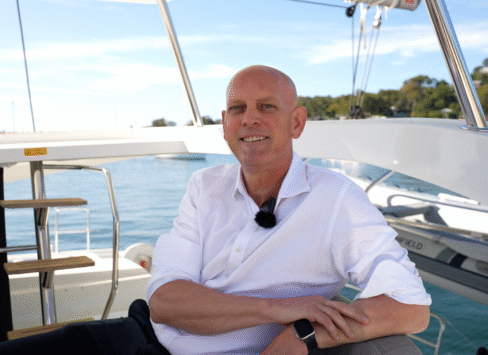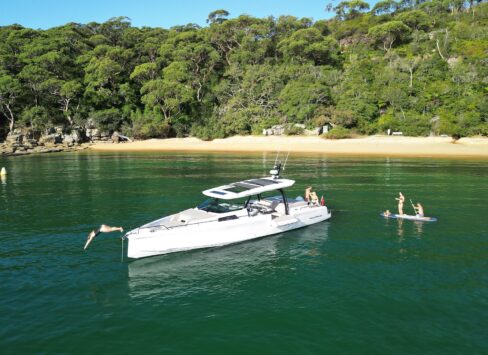Navigating Nautical Lingo
A Beginner’s Guide to Boat Terminology
Stepping onto a boat for the first time can be an overwhelming experience for beginners. The multitude of unfamiliar names and terminology might seem like a foreign language at first. Fear not, as this guide will delve into some of the very basic terminology found on boats, using the Lagoon 46 as an example.
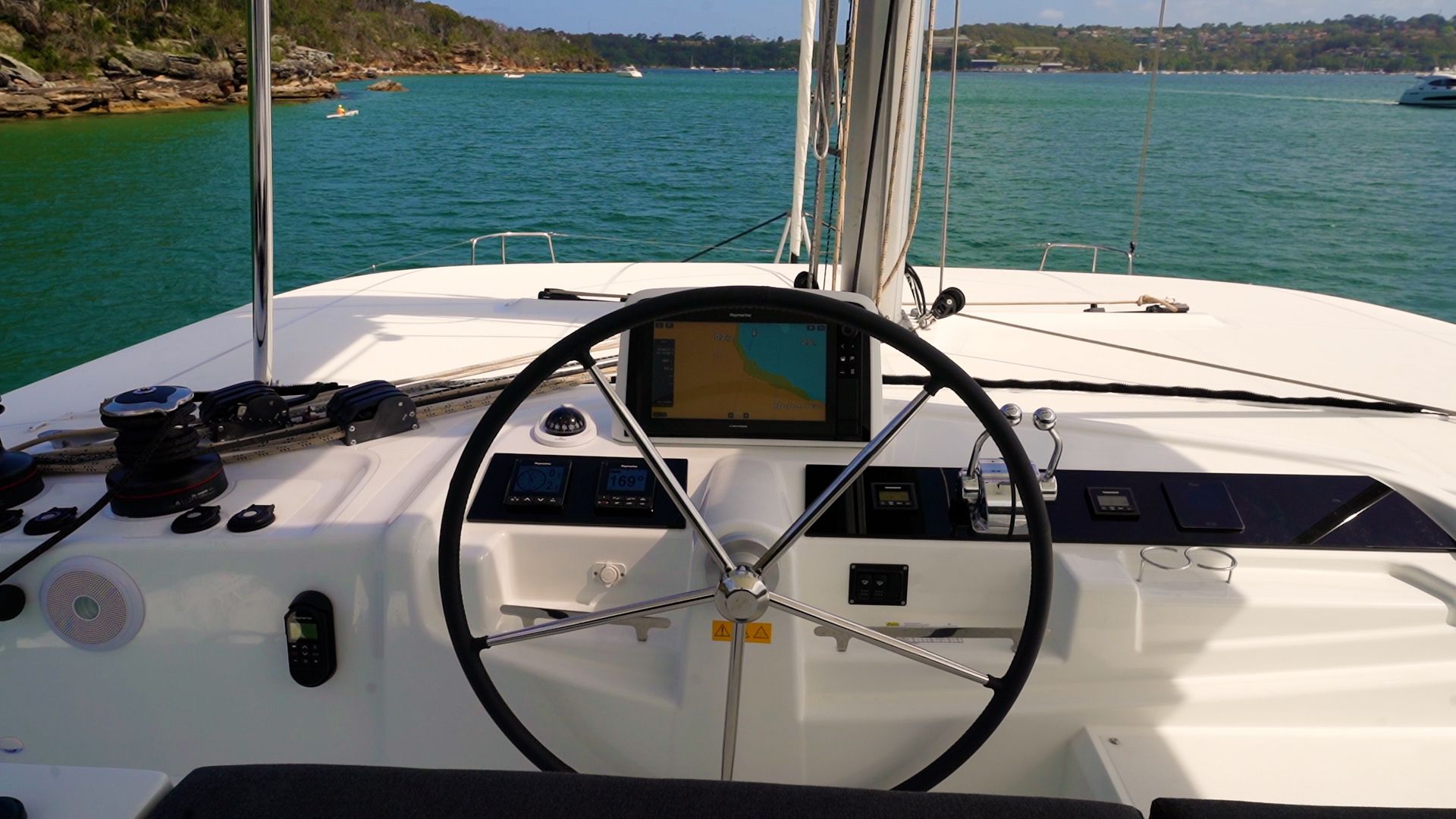

Bow and Stern: Getting Acquainted with Boat Ends
Starting at the very front, beginners often refer to it as the “front,” but in nautical terms, it’s the bow. Catamarans like the Lagoon 46 have two bows – a port (left) and a starboard (right). Understanding port and starboard is crucial, as it denotes the left and right sides of the boat, respectively.
The aft section of the boat is the general back area of a boat and is also known as the stern, which is more specifically the very back of the boat. Moreover, the specific 90-degree section that spans the very back of the boat is aptly called the transom, making it distinct from the rest of the stern.
Sails, Masts, and Booms: Sailing Essentials
Moving to the main body of the boat, we explore the different types of sails. The triangular sail at the front is known as the Genoa or Jib. Paired with the larger, rectangular main sail mounted on the main mast, these sails are crucial for sailing. The mast, a vertical aluminum pole, stands at the heart of the boat, supported by standing rigging and controlled by running rigging.
Helm Station: The Captain’s Domain
On the flybridge, where the boat is controlled, we find the helm or wheel, connected to the boat’s rudders. Catamarans typically have two rudders, each a vertical vein in the water controlled by the wheel. The chart plotter, a digital mapping display, provides essential information for navigation.
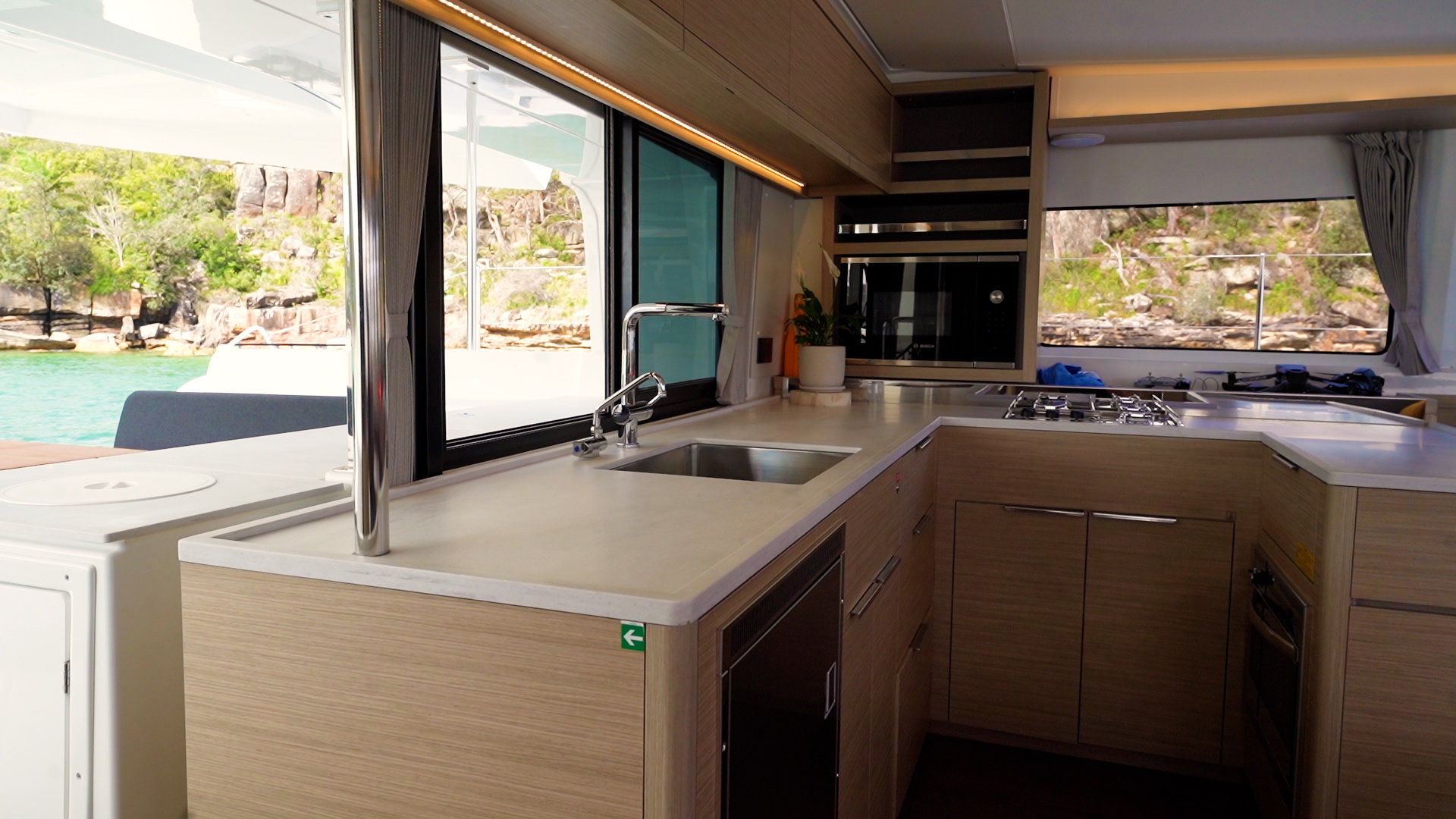
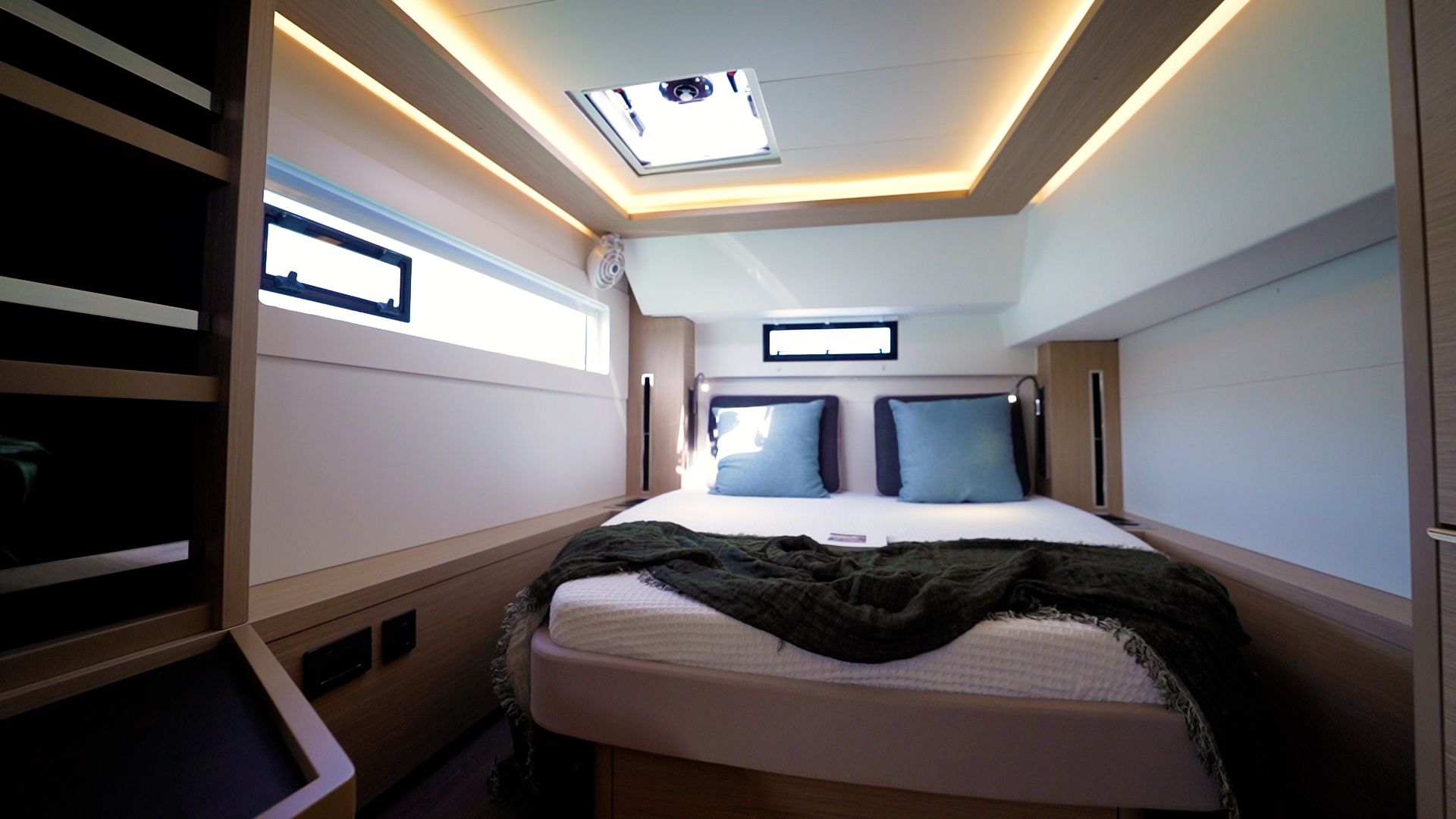
Galley and Saloon: Culinary Hub and Living Space
Inside the vessel, distinct spaces shape the onboard experience. The galley (kitchen), is strategically located, offering a dedicated area for food preparation and cooking. Seamlessly connected to the galley is the saloon, the central living space on the boat. Contrary to its phonetic cousin “salon,” the saloon is where you find a harmonious blend of lounging, dining, and entertainment. Together, the galley and saloon create an inviting interior, fostering camaraderie and comfort throughout the journey.
Cabins, Hatches, and Bunks: Sleeping Quarters
In the living spaces, we shift from the concept of bedrooms to cabins, and the windows become hatches. Beds are referred to as berths or bunks, emphasizing the nautical theme. Finally, the very lowest point inside the hull is the bilge, where any collected water can be safely pumped out.

We hope this guide boosts your confidence for your first boat adventure! If you’re curious about the Lagoon 46, there are shares available now.
IMAGINE THE EXPERIENCE
Brisbane Boat Show 2025
When: June 27-28
Where: Royal Queensland Yacht Squadron, QLD
What: Experience the Lagoon 43
Get to Know John Cowpe: Cofounder of COBLI and the Future of Boat Sharing
Discover the inspiring story of John Cowpe, cofounder of COBLI, as he shares his lifelong passion for boating and how he’s transforming the industry through boat sharing and syndication. From his Scottish sailing roots to creating a seamless, high-end platform in Australia, John reveals why boating means freedom, community, and adventure — and how technology is making it accessible to more people than ever before.
A Day in the Life of a Sydney Harbour Axopar 45 Syndicate Owner
Join us for a full day aboard the Sydney Harbour Axopar 45 — from beach hopping and paddleboarding to sunset cruising, see what life as a syndicate owner with COBLI really looks like.

